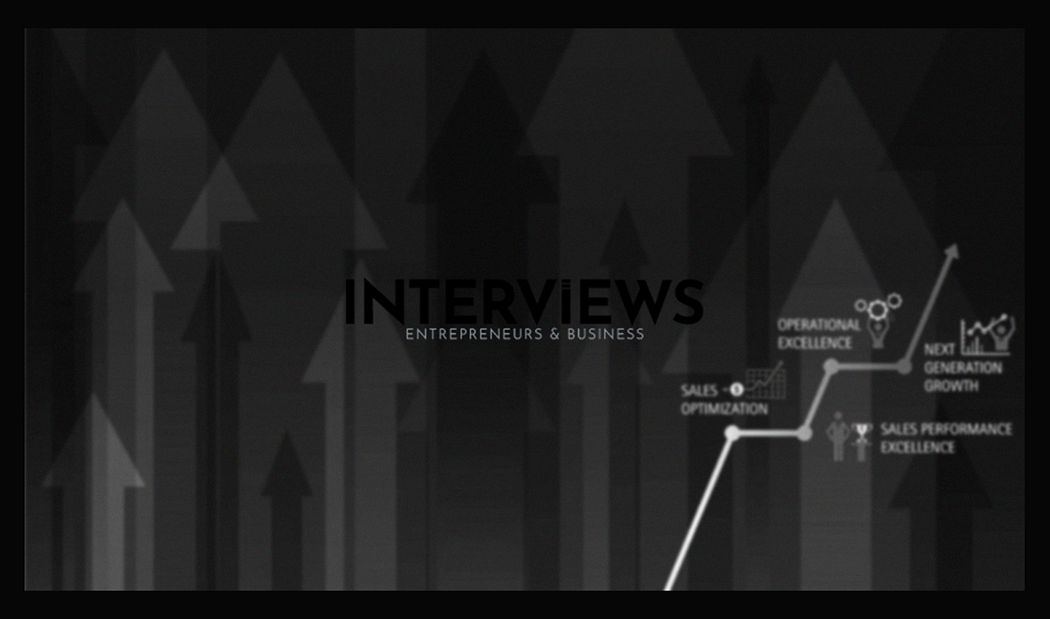Unlock Your Inner Hustler: The Ultimate Guide to Selling Digital Gold (aka Digital Products)
So, you have talent, brains, and maybe a caffeine habit. That’s great! You’re halfway there to becoming a digital mogul. Selling digital products is now a real path to flexibility and freedom. No more lugging boxes. Digital products have endless inventory, and pajamas are now business casual.
Platform Paradise: Where to Set Up Your Digital Shop
Choosing the right platform is important. It’s like picking shoes for a marathon. You need comfort and endurance. Luckily, options abound. Let’s look at some top choices:
Gumroad: The “Easy Button” for Digital Sales
Gumroad is simple to use. It’s ideal for the stylish entrepreneur. They provide tools for your journey. Want to sell Canva templates, ebooks, or cat memes? Gumroad lets you. They offer a free plan. Enjoy no monthly fees but they charge 10% in transactions. It’s fast to set up. If you crave simplicity, Gumroad is for you.
Podia: Your All-in-One Digital Emporium
Podia works like a Swiss Army knife. It covers courses, webinars, memberships, and more. They offer a generous free plan. It allows website creation and starts selling online courses or your ukulele tutorials. If you seek a comprehensive platform, Podia could be your fit.
Squarespace: Beauty Meets Business
Squarespace is for those who love design. Build a stunning online store with ease. If design matters, this is your playground. Squarespace makes your online store look premium. It’s not just a storefront; it’s a beautiful space.
ThriveCart: Checkout Champ
ThriveCart excels at checkout processes. It’s made for those focusing on sales funnels. This platform aims to convert users into customers. It’s a must for serious sellers.
Mighty Networks: Community is King
Mighty Networks is all about community. Create a movement around your products. If you sell memberships looking for vibrant interaction, this platform fosters connections among your users.
ConvertKit: Email Marketing Maestro
ConvertKit is the go-to for email marketing pros. It handles custom newsletters and email lists smoothly. If email is your strategy’s backbone, ConvertKit supports your needs.
Kajabi: The All-Inclusive Knowledge Kingdom
Kajabi serves knowledge entrepreneurs. It’s perfect for selling courses or memberships. Kajabi facilitates course creation and marketing. Consider this platform your command center.
Udemy: Course Marketplace Giant
Udemy is huge in online courses. It’s a marketplace with eager learners. Add your course for free and reach a wide audience. They take a cut of each sale, but the exposure is unmatched.
Shopify: E-commerce Everywhere
Shopify dominates e-commerce. Sell digital products and services here. They offer trials and customizable templates. Want to sell ebooks or designs? Shopify has your back.
PodBean: Podcast Paradise
PodBean suits those in audio formats. This platform targets podcast-related products. It’s perfect for audio creators.
OpenSea: NFT Frontier
OpenSea dives into NFTs. It’s a leading player in the NFT market. If you explore non-fungible tokens, check this out.
Classful: Classroom Champion
Classful fits education-focused products. It’s designed for K-12 content and learning resources.
Sellfy: Simplicity and Savings
Sellfy competes with Gumroad for ease of use. They feature a free plan with no transaction fees. It’s like finding cash in old jeans. Sellfy serves both digital and physical products, plus print-on-demand options.
SendOwl: Feature-Rich and Fee-Friendly
SendOwl offers features with affordability. Their free plan has a 5% transaction fee. It includes perks like an affiliate system and tax management tools. If you want balanced features, SendOwl supports you well.
Thinkific: Course Creation Powerhouse
Thinkific specializes in courses. Their free plan has features for course building. They empower creators to market directly. If courses matter most, Thinkific is top-notch.
Teachable: Teaching Made Easy
Teachable focuses on courses too. They offer a free plan for courses and downloads, with a transaction fee. It suits those aiming to build a free membership site.
Easy Digital Downloads: WordPress Wizardry
Easy Digital Downloads aids WordPress users. It’s a plugin that transforms websites into digital shops. For those in WordPress, this tool makes selling simple.
Etsy: The Artisan’s Abode
Etsy caters to creatives. It’s ideal for handmade and vintage goods, and digital products fit well. Create an Etsy shop without upfront fees. Etsy provides tools to manage your shop effectively.
Envato: Creative Asset Galaxy
Envato offers a wealth of creative resources. It’s a subscription service but often includes freebies or trials. Think of it as a large library of digital assets.
WooCommerce: WordPress E-commerce Power
WooCommerce excels in e-commerce through WordPress. This free plugin supports both physical and digital goods. If you want flexibility in WordPress, WooCommerce is your resource.
BigCommerce: Big Business Ready
BigCommerce supports scalable business ventures. They have free trial options to explore. If growth is your aim, BigCommerce deserves attention.
DPD (Digital Product Delivery): Fee-Free Freedom
DPD focuses on profit retention. They don’t impose per-sale fees or commissions. If cutting fees matters most, consider DPD.
Whop: New Kid on the Block
Whop is a fresh platform. It targets digital product sales for free. Keep an eye on Whop as it develops.
itch.io: Indie Game Haven
itch.io hosts indie game creators. If you create games or game assets, this niche platform suits you well.
Freebie Frenzy: Selling Digital Products Without Spending a Dime (Initially)
Want to try selling digital products without spending much? You’re in luck! Many platforms offer free plans or trials. Here’s how to sell digital products at minimal cost:
Free Plans with Transaction Fees: The “Pay as You Go” Model
- Gumroad: Free plan with
- a 10% transaction fee. Good for starters to test their ideas.
- SendOwl: Free plan with a 5% transaction fee. Cheaper than Gumroad on fees.
- Teachable: Free plan, transaction fees apply. Great for courses and memberships.
- Udemy: Add your course for free. Udemy takes a cut. Reach a large audience but share revenue.
Free Plans with No Transaction Fees (Rare Offers)
- Sellfy: Free plan, no transaction fees. Keep more of your earnings.
- DPD (Digital Product Delivery): No per-sale fees. Maximize profit per sale.
Generous Free Plans (Feature-Rich, Often Limited)
- Podia: Generous free plan. Good for websites, courses, and memberships. May have feature limits.
- Thinkific: Free plan with solid features for courses. Good option for budget course creators.
Free Trials (Test Before Committing)
- Shopify: Free trial. Explore the platform before deciding.
- BigCommerce: Free trial options. Check if it fits your business.
- Envato: Free trials for select items. Access premium items temporarily.
Free WordPress Plugins (For DIY Webmasters)
- Easy Digital Downloads: Free WordPress plugin. Turn WordPress into a digital store.
- WooCommerce: Free and powerful e-commerce plugin. Full control over your store.
Marketplace Magic (Leveraging Existing Buyers)
- Etsy: Create a shop. Tap into Etsy’s large buyer base.
- Udemy: Add your course for free. Access millions of students.
All-in-One Free Options (Jack of All Trades)
- Kajabi: All-in-one platform. Not strictly “free” forever but offers trials to see if worth investment.
Hot Ticket Items: Best-Selling Digital Products Now
Looking for hot-selling digital products? Here are top categories:
Online Courses: Knowledge is Key
Online courses are top sellers. People crave knowledge and skills. From coding to cooking, expertise attracts learners. Courses are versatile, scalable, and platforms like Udemy simplify creation and distribution. They yield consistent profit and high demand without faculty meetings.
Ebooks: Wordsmith Wonders
Ebooks are digital books. Popular due to versatility and low production cost. Platforms like Amazon Kindle and Shopify expand reach. Ebooks can cover any topic. If you can write, you can create one. Audiobooks are gaining popularity too, with high profit margins and global reach.
Printable Templates and Graphics: Organization Needs
Printable templates and graphics sell well, especially on Etsy. Think planners, calendars, and wall art. Customers value organization and aesthetics. If visually appealing, it’s likely to sell. Templates and planners cater to efficiency with style.
Stock Photography and Videos: Visual Assets
Stock photos and videos serve websites, marketing, and projects. Sellers who create stock media can find profitability in this area.
Music and Audio Tracks: Sound Assets
Music and audio tracks have demand too. For background music or sound effects, these assets can be sold and licensed.
Software and Mobile Apps: Tech Solutions
Software and mobile apps can be highly profitable. If tech-savvy, create software or apps for a growing market. Demand for new solutions is significant.
Memberships and Exclusive Content: Premium Access
Memberships provide community and premium content. Think exclusive articles or videos for paying members. It’s a smart way to create recurring revenue.
Printable Artwork: Consistent Etsy Sellers
Printable artwork sells well on Etsy. Digital art that people can download? A great way to sell without shipping issues.
Digital Templates and Tools: Time Savers
Digital templates and tools are valuable. Anything that saves time in the digital space is desirable. Think design assets or website templates.
Etsy Analysis: Is Selling on the Marketplace Worth It?
Etsy offers handmade, vintage, and digital goods. Is it worth selling digital products there? Let’s break it down:
Etsy: Profit Potential & Entry Barrier
Yes, Etsy can be very profitable, especially for digital products with low overhead costs. A platform with a built-in audience and low investment makes it appealing. Great for making money with digital goods.
Etsy Fees: The Details
Etsy takes fees. Here is the breakdown:
- Listing Fee: $0.20 per listing, like an entry fee. Charged per listing and renewal.
- Transaction Fee: 6.5% on sale price including shipping. Collected on each sale.
- Payment Processing Fees: US sellers face 3% + $0.25 via Etsy Payments. Also, payment processors take a share.
What Sells Well on Etsy (Digital Category)
Etsy shoppers have favorite digital products. Here are examples:
- Printable Artwork: Always popular.
- Wall Art: Abstract and motivational prints do well.
- Planners and Calendars: Daily and monthly planners cater to organization.
- Event Printables: Invitations for weddings and birthdays sell.
- Educational Worksheets: For kids to learn effectively.
- Holiday Prints: Seasonal designs have success.
- Specific Invitations: Tailored invites for special events.
- Personalized Planners: Customization attracts buyers.
- Monogrammed Art: Personalized home decor.
- Notion Templates: For productivity enthusiasts.
- Printable Stickers: Planner lovers enjoy them.
- Clipart: Popular for DIY enthusiasts.
- Printable Coloring Pages: Fun for all ages.
- Budget Templates: Promote finance organization.
Etsy Drawbacks: A Reality Check
Etsy has downsides. Consider these:
- Saturated Marketplace: High competition makes standing out tough.
- Building Loyalty Challenge: Customers prefer “Etsy” over “Your Shop.” Retaining buyers can be difficult.
- High Fees Impact: Fees reduce profits if pricing is unbalanced.
- No Shipping Support (For Digital Products): Irrelevant for digital, included as a general con.
- Offsite Advertising Fees: Extra fees apply if Etsy promotes your listings elsewhere.
Canva Designs on Etsy: Guidelines
Canva and Etsy complement each other well. Keep these rules in mind:
- Do Create Original Designs: Use Canva’s assets to make unique pieces.
- Don’t Resell Existing Templates: Don’t sell Canva templates as-is; that’s prohibited.
- Sell Digital Products: Printables and ebooks made with Canva are acceptable.
- Sell Physical Products: Original wall art or merchandise using Canva elements is fine too.
- Include Shareable Links: Provide links for customers to edit templates in their own accounts.
- Review Canva’s Terms: Always check to ensure compliance with licensing agreements.
Business License Requirement?
Etsy does *not* require a business license for selling on their platform. However, check local regulations for business compliance.
You might need licenses or permits from other agencies. Check local and national regulations.
Etsy Earnings: The Real Numbers
Average Etsy sellers make about $43,000 to $46,000 yearly. Digital product sellers can earn more, with some making $2,000 to $10,000 *per month*. New Etsy printable sellers could reach $400/month, while established stores can earn $4,000 or even $10,000+ monthly from digital printables.
Canva Design Domination: Where and How to Sell Your Creations
Canva makes design easy. How do you turn Canva creations into cash? Here’s your guide:
Platforms for Canva Gold
- Etsy: Ideal for Canva templates and designs.
- Gumroad & SendOwl: Digital product platforms that offer secure payment processing.
- Teachers Pay Teachers (TPT): If you’re creating educational resources with Canva, TPT is your niche marketplace.
- Canva Creators Program: Become a creator and get paid whenever someone uses your templates in Canva. You get paid for usage.
- Your Own Website: Offers control over branding and pricing.
- Flodesk Checkout: Create a sales page specifically for your Canva designs.
- Shopify: Integrate Canva designs into your own Shopify store. Sell templates via Shopify.
Key Considerations for Canva Sales Success
- Canva’s Licensing: Understand and comply with Canva’s licensing rules for commercial use.
- Product Delivery: Provide easy links for downloads or direct file downloads.
- Promote, Promote, Promote: Use social media and other channels to reach your audience.
Shopify Showdown: Is It the Right Platform for You?
Shopify is an e-commerce giant. Let’s see if it fits your digital product goals:
Shopify Strengths: Why Choose the Blue Giant?
- Beginner-Friendly: Shopify is simple to use, even for newbies. Building a store is straightforward.
- Customizable Online Store: Create a fully customizable store with templates and tools. Build a unique brand.
- Selling Digital Services: You can sell digital services, not just products.
- Shopify Starter Plan: Starting at $5/month, this plan is budget-friendly.
Shopify Drawbacks: The Fine Print
- Monthly Subscription Fees: There are monthly fees. Costs for applications and themes can add up.
- Transaction Fees: Depending on your plan, you may encounter transaction fees that affect profits.
- Not Free (Beyond Trial): There’s a free trial, but a paid subscription is needed to sell.
- Product Restrictions: Shopify restricts certain products, like alcohol and tobacco.
Gumroad Alternatives: When You Need a Change of Scenery
Gumroad is great but not the only option. If you need an alternative, consider Sellfy. It’s known for easy setup and user-friendly approach. If you want an easy-to-use eCommerce platform, check out Sellfy.
Website? Who Needs a Website? Selling Digital Products Without One
No website? No problem! Selling digital products without one is now doable. Options include:
- Online Marketplaces: Etsy and Udemy leverage existing audiences.
- Hosted Checkout Pages: Platforms like Flodesk allow standalone sales pages.
- Social Media and Affiliate Marketing: Sell directly or use affiliate marketing.
Digital Marketing Niches to Watch: Cash Cow Categories
In the digital marketing world, some niches stand out. Focus on these for impact:
- SEO (Search Engine Optimization): Improve website rankings in searches.
- PPC (Pay-Per-Click): Paid ads where you pay per click.
- Email Marketing: Build and nurture email lists.
- Content Marketing: Create valuable content to attract customers.
- Data Analytics: Analyze data to improve strategies.
- Local SEO for Niche Businesses: Optimize searches for specific businesses.
- Voice Search Optimization: Optimize for voice-search capabilities.
- Chatbot and Conversational Marketing: Use chatbots for customer interaction.
- Micro-Influencer Marketing: Partner with smaller influencers.
- Podcast Marketing: Use podcasts for marketing efforts.
- Online Communication: Enhance digital communication strategies.
- Video Marketing for Short-Form Content: Engage audiences with short videos on platforms like TikTok.
- Affiliate Marketing for Niche Products: Promote niche products in affiliate marketing.
Digital Product Downsides: The Not-So-Glamorous Truth
Digital products have their challenges:
- High Competition: The digital market is crowded. Standing out is vital.
- Risk of Piracy and Unauthorized Distribution: Digital products are easily copied. Piracy is a real threat.
- Challenging to Perceive Value: Customers may not always see the value in digital products. Intangible nature can obscure value perception.
Etsy vs. Shopify: The Ultimate Showdown
Etsy vs. Shopify – the ongoing question. Which is better? It depends on *you* and what you sell. Etsy is a marketplace for handmade and vintage items, including digital products. Shopify is for building your e-commerce site. Choose based on your goals.
This is your guide to the world of digital products. Now go create and sell like the digital dynamo!




